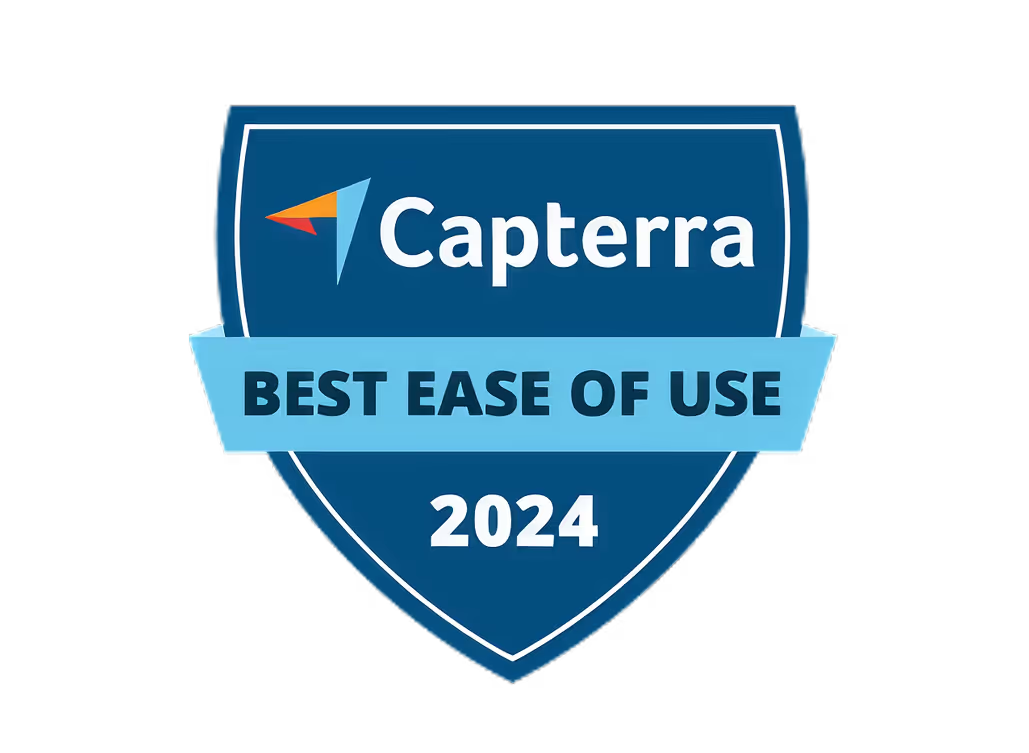Improving Campaigns with Ecommerce Ad Intelligence

Most marketers would agree that getting the most out of ad spend is crucial for ecommerce success.
Leveraging ecommerce ad intelligence provides actionable insights to refine campaigns, target high-intent audiences, and boost conversion rates.
In this post, we'll explore how ad intelligence tools empower brands to optimize creatives, bidding strategies, and budget allocation — ultimately driving growth through data-driven decision making.
Introduction to Ecommerce Ad Intelligence
Ecommerce ad intelligence refers to leveraging data and analytics to gain actionable insights that can optimize online advertising campaigns. By utilizing ad intelligence tools and techniques, ecommerce businesses can improve campaign targeting, increase conversion rates, and get more value from their ad spend.
Exploring the Role of Ad Intelligence Tools in Ecommerce
Ad intelligence tools aggregate data from multiple sources to uncover trends, patterns, and opportunities that human analysis alone may miss. Supporting this high-volume retrieval often requires robust infrastructure, such as HasData, to collect public web information efficiently.
Key capabilities include:
- Sentiment analysis - Understanding customer perceptions and feelings towards products, brands, competitors to inform messaging and positioning.
- Competitor benchmarking - Tracking competitors' ad creatives, campaigns, and performance to inspire new ideas.
- Multi-touch attribution - Identifying which ad channels and campaigns are driving conversions at each stage of the customer journey.
- Predictive analytics - Estimating future performance to optimize budgets, bids, and creative assets.
- Custom audience building - Creating tailored segments based on behaviors, demographics, location and more to target likely buyers.
By leveraging these insights, ecommerce advertisers can refine campaign objectives, creative direction, budget allocation and more to boost performance.
Maximizing Conversion Rates with Strategic Insights
Ecommerce ad intelligence empowers data-driven optimization to increase conversion rates. Key strategies include:
- Personalizing creatives - Crafting customized ads for different segments using their preferred messaging.
- Optimizing campaigns for devices - Allocating budget effectively across mobile, desktop, tablets based on analytics.
- Testing ad variations - A/B testing ad copy, visuals, calls-to-action to determine what resonates.
- Remarketing high-intent users - Targeting those who previously engaged with ads or site content.
- Monitoring analytics - Tracking KPIs to identify new opportunities as they emerge.
By combining ad intelligence with strategic testing and optimization, ecommerce advertisers can make smarter decisions to maximize conversions.
Harnessing Analytics for Ecommerce Success
Understanding customer behavior through analytics is key for ecommerce businesses to make data-driven decisions that increase sales and conversion rates. By integrating analytics tools, tracking conversions, and unifying data sources, ecommerce brands can gain actionable insights to refine their marketing strategies.
Integrating Analytics for Comprehensive Data Collection
Integrating analytics across various platforms and touchpoints paints a complete picture of the customer journey. This enables identifying pain points leading to cart abandonment, understanding customer lifetime value, and tracking micro-conversions across channels. A clear view of these interactions also depends on a consistent data extraction process, which helps ensure that insights remain accurate and actionable. Benefits include:
- Connecting data from web analytics, social media, email marketing, and more for a single source of truth
- Identifying high-value customer segments to target
- Tracking user behavior across devices with cross-device analytics
- Optimizing on-site experiences based on drop-off rates
With comprehensive analytics, brands can determine optimal frequency for retargeting campaigns, personalized recommendations driving repurchases, and high-converting landing pages.
The Impact of Conversion Tracking on ROI
Tracking conversions such as registrations, purchases, and email sign-ups is key for calculating return on ad spend. This enables identifying best-performing campaigns, platforms, and creatives.
Benefits of conversion tracking:
- Quantify impact of marketing efforts on revenue
- Optimize budgets by doubling down on high-ROI campaigns
- Build lookalike audiences based on converting users
- Set up automations to re-engage customers post-purchase
With a clear view conversion rates, ecommerce brands can optimize budgets, target profitable audiences, and maximize ROAS.
Unifying Data for a Holistic View of the Target Audience
Unifying customer data from CRM systems, web analytics, and offline sources enables building detailed buyer personas and targeted audience segments.
Benefits include:
- 360-degree view of customer lifecycle and churn risks
- Granular segmentation for personalized messaging
- Identify upsell opportunities based on purchase history
- Map customer journeys to reduce fallout
With a unified customer data platform, brands can engage users with relevant recommendations, incentives and 1:1 personalization for higher conversion rates.
Targeting the Right Audience with Precision
Using ecommerce ad intelligence tools to analyze customer data can help identify and target the most valuable segments to improve campaign performance.
Employing Behavioral Segmentation to Reach Ideal Customers
Behavioral segmentation divides an audience into groups based on their actions and engagement with a business. Some key ways ecommerce ad intelligence enables effective behavioral targeting include:
- Analyzing historical purchase data to find the best customers based on metrics like order value, purchase frequency, etc. Targeting similar high-value segments can improve conversion rates, , for example, by showing sales notifications to encourage engagement.
- Identifying users who have shown interest but not yet converted with features like cart abandonment tracking. Retargeting these users can remind them to complete their purchase.
- Monitoring on-site behaviors like page views, clicks, and on-page time to determine content interests. Serving relevant ads to engaged users boosts relevancy.
- Tracking post-purchase behaviors like returns, exchanges, reviews etc. to identify potential brand loyalists for retention campaigns.
Enhancing Campaigns with Demographic Insights
Ecommerce ad intelligence leverages demographic data like age, gender, income level etc. to further refine targeting and increase relevancy:
- Split testing ad creative based on demographic groups' responses can optimize messaging for each segment.
- Analyzing demographic trends in high-value customer categories allows expanding reach to more users who fit that profile.
- Identifying underserved demographic groups opens opportunities to grow market share by better catering to their preferences.
Expanding Reach with Lookalike Audience Strategies
Lookalike modeling uses data points to find new users who closely resemble a brand's best existing customers. Benefits include:
- Expanding reach to find more potential customers with a high affinity for products/services.
- Testing and learning what resonates best with new, valuable segments.
- Diversifying beyond existing demographic strongholds to fuel growth into new markets.
As ecommerce ad intelligence continues advancing, it unlocks more refined targeting capabilities to maximize campaign ROI. But brands must also ensure responsible data practices around transparency, consent, and delivering value to users. Maintaining high ethical standards builds consumer trust and long-term sustainability.
sbb-itb-606b7a1
Optimizing Ad Creatives with Sentiment Analysis
Sentiment analysis allows advertisers to gain valuable insights into consumer perceptions of their ad creatives. By analyzing user reactions and feedback, brands can refine messaging and visuals to boost engagement and performance.
Testing Ad Creatives for Enhanced Performance
A/B testing ad creatives is crucial for determining what resonates best with target audiences. Brands can test different:
- Ad copy - Evaluate how changes in messaging and tone impact click-through and conversion rates
- Visual styles - Assess preferences for photography vs illustrations, colors, etc.
- Ad formats - Compare engagement for square ads vs landscape layouts
- Placements - Identify high value positioning in social feeds, websites, etc.
Continuous testing allows brands to optimize creatives based on real user data and feedback loops.
Personalization: Crafting Ad Copy that Resonates
Personalized ad copy drives higher relevancy and conversion rates by speaking directly to consumer needs and interests. Brands can leverage data and analytics to:
- Segment audiences for tailored messaging
- Localize language and offers to specific regions
- Integrate personalized elements like locations and names
Dynamic ad copy takes personalization even further by customizing messaging for each user in real-time.
Leveraging Consumer Sentiment for Ad Relevance
Analyzing consumer sentiment from reviews, social posts and surveys allows brands to:
- Identify pain points to address in ad messaging
- Highlight key product benefits that drive positive sentiment
- Refine tone and vocabulary based on how users feel about the brand
Continuous sentiment analysis ensures creatives stay relevant as consumer perceptions evolve over time.
In summary, leveraging sentiment analysis and testing allows brands to data-optimize ad creatives for maximum relevance, engagement and conversions. Personalization and dynamic adaptations based on consumer feedback are key to campaign success.
Strategic Bidding and Budget Management for Maximum ROI
Implementing smart bidding strategies and budget allocation can help optimize ad spend and maximize returns. Here are some tips:
Analyzing Market Benchmarks for Competitive Ad Bidding
- Research average cost-per-click and conversion rates for your keywords in your industry. This provides a benchmark to inform your bids.
- Study your competitors' ads to understand their bidding strategies. This helps you bid competitively.
- Use ad intelligence tools to gain insights into competitors' ad performance and identify opportunities.
Adopting Flexible Bidding for Real-Time Optimization
- Consider automated bidding strategies like target CPA bidding to dynamically optimize bids to meet targets.
- Machine learning algorithms can adjust bids based on real-time performance data to maximize conversions.
- Flexible bidding enables adapting to sudden market changes that impact costs and conversion rates.
Efficient Budget Pacing to Sustain Campaign Momentum
- Set daily budget limits and use pacing strategies to deliver ads evenly over time.
- Allocate budgets across ad groups to balance exposure for priority products/services.
- Monitor spend pace and optimize for steady momentum, avoiding early overspend or underspend.
Careful analysis, flexible bidding, and budget pacing work together to gain competitive advantage, deliver ROI, and sustain long-term success. The key is continuously monitoring and optimizing based on marketing analytics.
Continual Improvement with Neuromarketing and Analytics
The ongoing process of analyzing campaign data and applying neuromarketing techniques can lead to incremental improvements over time.
Setting KPIs for Measurable Marketing Success
Defining key performance indicators (KPIs) that align with overall business goals is crucial for effectively measuring marketing campaign success. Useful KPIs to track include:
- Click-through rate (CTR)
- Cost per click (CPC)
- Conversion rate
- Return on ad spend (ROAS)
Setting specific, quantifiable targets for each KPI enables clear benchmarking to understand what's working and what needs refinement. As an example, an ecommerce company may set a goal of achieving a 2% CTR and $2 ROAS.
Optimizing Conversion Funnels with User Behavior Insights
Analytics provides visibility into user actions and behavior, which can inform optimization of conversion funnels. Useful insights include:
- Identifying high exit pages to understand pain points
- Analyzing most clicked calls-to-action (CTAs)
- Tracking user flow through the funnel with heatmaps
This data enables tweaking page layouts, CTAs, content, etc. to remove friction points and guide users towards completing desired actions.
Applying Neuromarketing Principles for Deeper Engagement
Neuromarketing explores subconscious triggers that stimulate emotions and drive decision-making. Useful techniques include:
- Emphasizing social proof with ratings, reviews, case studies
- Using contrasting colors for visual emphasis
- Personalizing messaging to appeal to motivations
- Optimizing ad visuals based on eye-tracking studies
Applying these principles can help craft ads that more intuitively capture attention while conveying relevance, driving higher conversion rates.
Conclusion and Key Takeaways
In summary, ecommerce ad intelligence enables brands to increase performance through optimized targeting, creative testing, flexible bids, budget pacing, funnel analysis and incremental optimizations over time.
Recap: The Power of Unified Data and Analytics
Unified data and analytics are key to getting the most out of ecommerce ad campaigns. By consolidating data from multiple sources into one platform, brands gain a holistic view of campaign performance. This enables them to identify opportunities, surface insights, and make data-driven decisions.
Some of the key benefits of unified data include:
- Cross-channel visibility into customer journeys
- More granular segmentation for precision targeting
- Optimization based on real-time data signals
- Improved attribution modeling
With unified analytics, brands can track KPIs across channels to quantify impact. This leads to smarter allocation of budgets to the highest performing platforms and creatives.
The Continuous Optimization Loop
Ecommerce marketing success depends on continuously optimizing campaigns through testing and measurement. Key steps in this loop include:
- Analyze campaign data to identify optimization opportunities
- Test new targeting parameters, creatives, landing pages
- Measure performance of tests to quantify impact
- Implement winning variants and iterate
By repeatedly going through this process, brands refine their campaigns, improve results over time, and adapt to changing market conditions.
The key is to take an incremental, data-driven approach focused on learning and gradual optimization vs. drastic changes. Small, controlled tests allow accurate analysis.
With ecommerce ad intelligence, this optimization process is streamlined through automation and AI recommendations. Performance improves quickly through rapid test iteration powered by data.


















